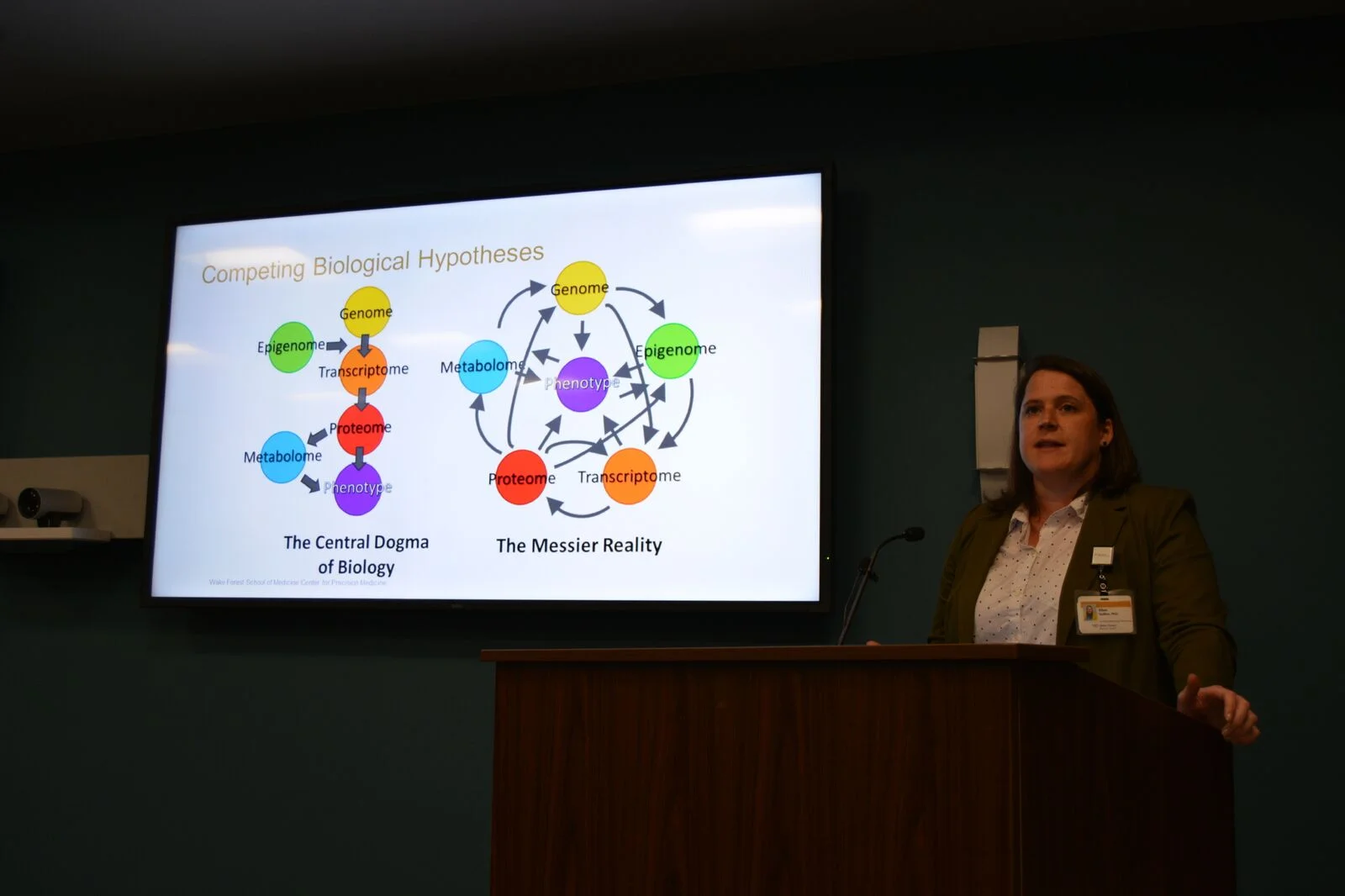Assistant Professor
Wake Forest School of Medicine
Department of Internal Medicine
Section on Molecular Medicine
Center on Diabetes, Obesity and Metabolism
Center for Biomedical Informatics
Nutrition Research Center (NRC) Building, G-55, Medical Center Blvd, Winston-Salem, NC 27157
equillen@wakehealth.edu
education and training
BS, Biology, Genetics (05/2005)
MA, Anthropology (05/2007 )
PhD, Anthropology (12/2010 )
Postdoc, Statistical Genetics (12/2014 )
University of Kansas, Lawrence, KS
Pennsylvania State University, University Park, PA
Pennsylvania State University, University Park, PA
Texas Biomedical Research Institute, San Antonio, TX
prior positions
Staff Scientist, Texas Biomedical Research Institute, Department of Genetics, San Antonio, TX , 2015-17
Research Focus
Methods and Technologies
R and perl programming
Variance component analysis
In vitro melanogenesis phenotyping
RNA and DNA extraction from bone
Genome-wide association studies
Admixture mapping
RNAseq (mRNA, miRNA)
Microarray analysis (methylation, mRNA)
Integrated omics
Dr. Quillen is a trained anthropologist and a statistical and population geneticist. Her studies are focused on complex traits and include analyses of both normal variation (e.g. pigmentation and tanning response) as well as diseases of aging(osteoporosis, osteoarthritis, ). Dr. Quillen is interested in applying integrated omic analyses to study age-related disorders and their molecular and physiological basis. Her initial training involved the identification of admixture and population history events that influence modern population-wide differences in pigmentation allele frequencies. She continued her research with family-based studies of schizophrenia through integration of transcriptomic and methylation data. This led to studies including proteomics and metabolomics data and age-related changes in model structure. Recent collaborations include transcriptomic analyses of white blood cells to identify changes related to osteoporosis of the spine and femur in the baboon model and studies on the relationship between a decline in bone quality and the metabolic syndrome.
In her work, Dr. Quillen combines transcriptomic and epigenetic data with proteomics and metabolomics to better understand bone health and metabolic disease in non-human primate models.
Inside the Lab
We have developed several new analytical methods for working with genomic and transcriptomic data. This includes a method to generate an estimated genetic value in pedigreed populations to remove the effect of environmental variation from genetic analyses. In this work, we compared multiple methods of calculating empirical kinship using whole-genome sequence data and subsets of these data. We also developed a method for the integrated analysis of transcripts in pathways using a variance components-based method.
Our group participated in multiple collaborative efforts to characterize genetic variation related to population structure and normal phenotypic variation for which we performed genotyping, contributed to sample collection, collected genetic and phenotypic data, and designed and performed the analyses to characterize the role of ancestry and genitive variants on constitutive pigmentation and tanning response. As part of our ongoing efforts to understand the role of human evolutionary history in shaping population-specific disease risk, our ongoing work focuses on tanning as an adaptive phenotype to protect against UV damage in populations of the Americas while simultaneously increasing risk of vitamin D deficiency.
Currently, we are collaborating with investigators at the University of Colorado at Boulder to examine the impact of diabetes on protein production and modification in humans and the baboon as a model of metabolic disorders of the bone. The goal of the research is to identify the joint impact of age and diet on bone health independent of bone mineral density. This line of research is increasingly necessary as more elderly individuals suffer from obesity and diabetes and a decreasing proportion of fractures occur among those with low BMD.



